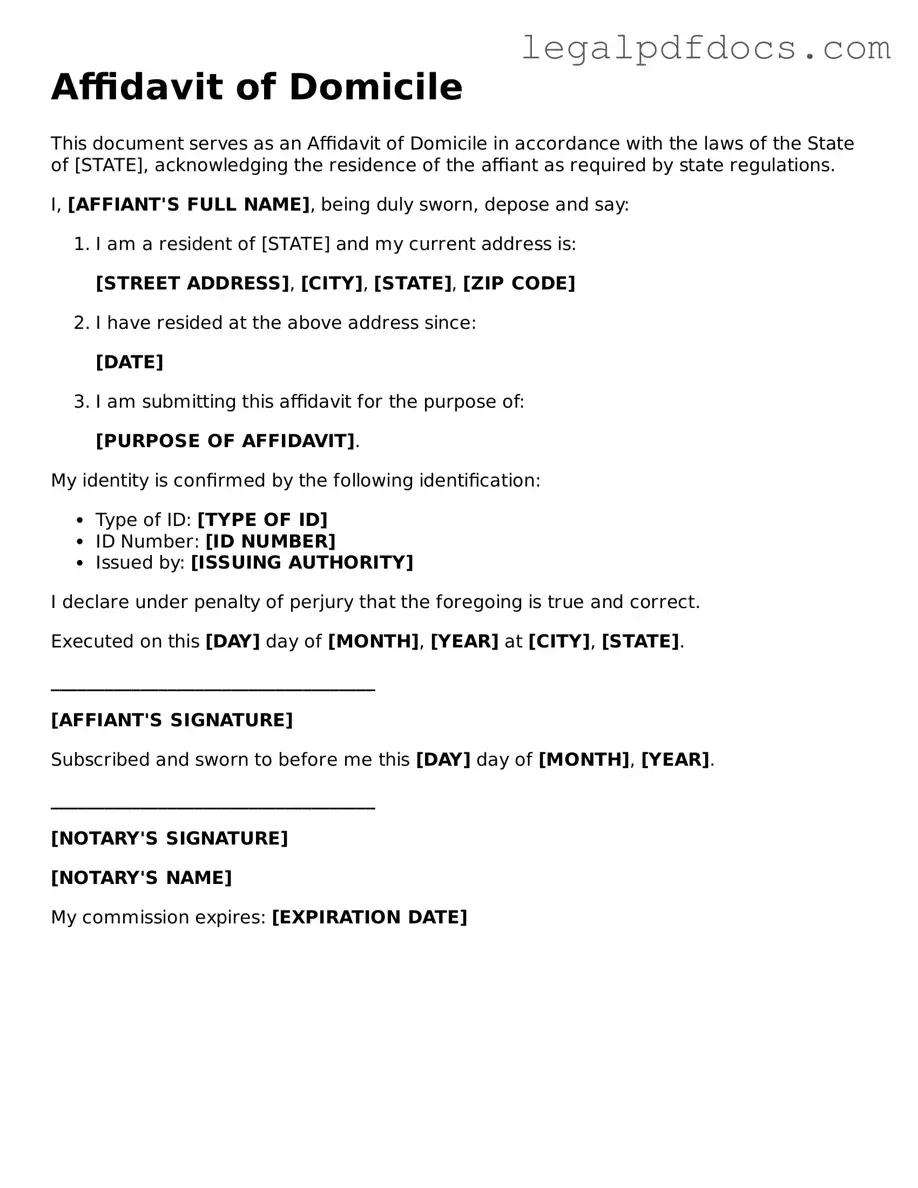The Affidavit of Domicile form plays a crucial role in establishing an individual's legal residence, particularly in matters related to estate planning and probate. This document serves as a sworn statement that affirms where a person considers their permanent home to be. It is often required when settling the estate of a deceased individual, ensuring that assets are distributed according to the laws of the state where the deceased was domiciled. The form typically includes essential information such as the individual's name, the address of their primary residence, and the date of death if applicable. Notably, it may also require the signatures of witnesses or a notary public to validate the claims made within. Understanding how to correctly complete and file this form is vital for executors and beneficiaries alike, as it can significantly impact the administration of an estate and the distribution of assets. Timely and accurate submission can help avoid legal complications and ensure a smoother transition during what is often a challenging time for families.
